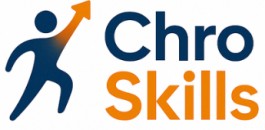
Understanding Technology Enablement in HR
Technology as a Catalyst for Business Success
In our rapidly evolving digital age, technology enablement has become a cornerstone for organizational success. Businesses are leveraging digital tools not just to streamline operations, but also to transform human resources functions and align them with broader business goals. As companies maneuver through this digital transformation, the importance of integrating technical enablement into HR strategies cannot be overstated.
Employees today expect HR departments to harness technological advancements for improved user adoption and customer experience. The ongoing digital adoption across industries highlights the need for HR to serve as a bridge between employees and tech tools. This requires CHROs to possess not only an understanding of business objectives but also technical skills to drive digital solutions that support business outcomes.
To achieve successful tech enablement, organizations must provide comprehensive training support and app guidance to employees. Training plays a vital role in ensuring that all staff members are not only familiar with new technologies but can also utilize them effectively to boost productivity. By adopting best practices in communication collaboration, companies can foster a tech-enabled environment where staff can thrive.
Moreover, technology can support decision making and change management processes within HR. Data-driven insights can empower HR leaders to make informed decisions that align with strategic business goals. As we explore further, one of the key challenges remains user adoption and ensuring that tech solutions align with organizational needs.
For more insights on how to leverage technology for organizational performance, read more here.
Key Technological Skills for CHROs
Mastering Technological Skills for Effective HR Leadership
In the evolving business climate, having a grasp on technology is no longer optional for Chief Human Resources Officers (CHROs). With the swift pace of digital transformation, organizations demand HR leaders who can skillfully leverage technology to achieve their business goals. Understanding the critical technological skills for effective HR leadership begins with identifying the key areas where tech enablement can substantially impact HR functions.
1. Digital Tools and Platforms: HR leaders should be adept in utilizing digital tools that streamline processes from recruitment to employee engagement. Familiarity with platforms that provide app guidance and user-adoption support is essential for smooth integration into existing systems.
2. Data Analytics: The ability to analyze and make data-driven decisions is a cornerstone of modern HR practices. This requires knowledge of data analytics tools that enhance decision making and provide insights into employee performance and satisfaction.
3. Communication and Collaboration Technologies: Facilitating seamless communication within organizations through digital solutions is imperative. Whether coordinating remote teams or enhancing customer experience, proficiency in these technologies will help CHROs foster a cohesive workplace.
4. Change Management and Training: Implementing technological advancements involves guiding employees through change management processes. Offering training support ensures that all members of the company can harness new technologies efficiently.
It's crucial for CHROs to continually update their technical knowledge to remain relevant amidst technological advancements. To gain more insights on how integrating technology can enhance HR efficiency, consider visiting this resource on cutting-edge warehouse management solutions.
Integrating Technology into HR Strategies
Embedding Technology into Human Resources Strategies
Integrating technology into human resources strategies is essential for driving digital transformation within organizations. To achieve successful integration, companies must align their HR technology deployment with larger business goals, ensuring that all digital tools and solutions serve a clear purpose in enabling business growth and enhancing employee engagement.
The following considerations are crucial when embedding technology in HR strategies:
- Technical Enablement and Support: For successful digital adoption, HR teams need to provide robust training support and continuous assistance to help employees navigate new digital tools. This includes app guidance and effective onboarding processes, which contribute to smoother user adoption and better communication collaboration within the organization.
- Change Management: Adoption of new technologies requires a significant shift in mindset across the organization. Change management strategies should be implemented to accommodate the transition, minimizing resistance and fostering a culture receptive to technological advancements.
- Decision Making with Data-Driven Insights: By harnessing data analytics, HR leaders can derive insights that enhance customer experience and inform strategic decisions. This involves analyzing employee data, which can provide a deeper understanding of workforce dynamics and help tailor solutions to meet specific business needs.
- Cross-Departmental Collaboration: Technology enablement in HR shouldn't occur in isolation. Collaboration with other departments ensures that tech solutions are cohesive and align with overall company functions, leading to efficient processes that support sales enablement and customer satisfaction.
Incorporating these practices empowers HR leaders to build strategies that are adaptable to the ever-changing technological landscape, positioning their organizations for long-term success in digital transformation efforts.
Overcoming Challenges in Technology Adoption
Navigating Digital Transitions in HR
The adoption of new technology within human resources is not without its challenges. Organizations often face obstacles when integrating advanced digital tools to optimize their HR strategies. The shift to digital does not only involve the introduction of new tools but also a significant change in the organizational mindset. To alleviate the hurdles associated with technological advancements, businesses should focus on comprehensive training and support. This involves equipping employees with robust training support systems to familiarize them with new tools. Training support ensures a smoother digital adoption process and promotes user adoption among employees, thereby aligning technological enablement with the organization's business goals. Moreover, successful digital transformation in HR requires clear communication and collaboration across departments. It’s pivotal for HR leaders to foster an environment where exchanging ideas about tech advancements becomes a norm. This synergistic approach is vital for encouraging open dialogue, which can help identify potential setbacks early on and develop effective solutions. Additionally, the decision-making process should incorporate data-driven insights powered by advanced data analytics. This enables HR leaders to align their digital strategies with tangible business outcomes, assessing both the risks and rewards of tech enablement initiatives. Ultimately, overcoming the challenges posed by technology adoption is a testament to an organization’s adaptability and willingness to embrace change. By focusing on best practices such as change management and strategic implementation of digital tools, companies can enhance the customer experience, driving positive business outcomes in the competitive digital landscape.The Role of Data Analytics in HR
Embracing Data in HR Practices
In the era of technology enablement, leveraging data analytics is no longer optional for organizations striving to remain competitive and meet business goals. Data plays a crucial role in the decision-making process, allowing businesses to identify trends, evaluate employee performance, and streamline HR strategies effectively.
Through the use of digital tools, CHROs can gain insights into employee engagement, career development, and retention rates, which can help improve customer experience and meet organizational objectives. By integrating data analytics into day-to-day HR practices, businesses can pinpoint areas for improvement and make informed decisions that drive growth.
Enhancing Change Management with Analytics
Embracing data-driven solutions also supports change management efforts within organizations. As digital transformation unfolds, understanding the impact of technological advancements on employees is essential. Using analytics, companies can monitor digital adoption and user adoption rates to identify training needs and tailor support solutions. This approach ensures employees stay engaged and productive during transition periods.
Optimizing Communication and Collaboration
To harness the power of data, organizations must invest in communication collaboration platforms. These tools enable seamless sharing of insights across departments, fostering a culture of data-informed decision-making. Sales enablement and app guidance capabilities further enhance user experience, ensuring everyone benefits from shared knowledge and technical enablement.
Overall, embracing a data-centric mindset, supported by effective technology and training support, positions businesses to navigate the complex digital landscape with agility and confidence. The integration of analytics within HR functions is vital for achieving sustained success and advancing overall business objectives in today's tech-driven environment.













